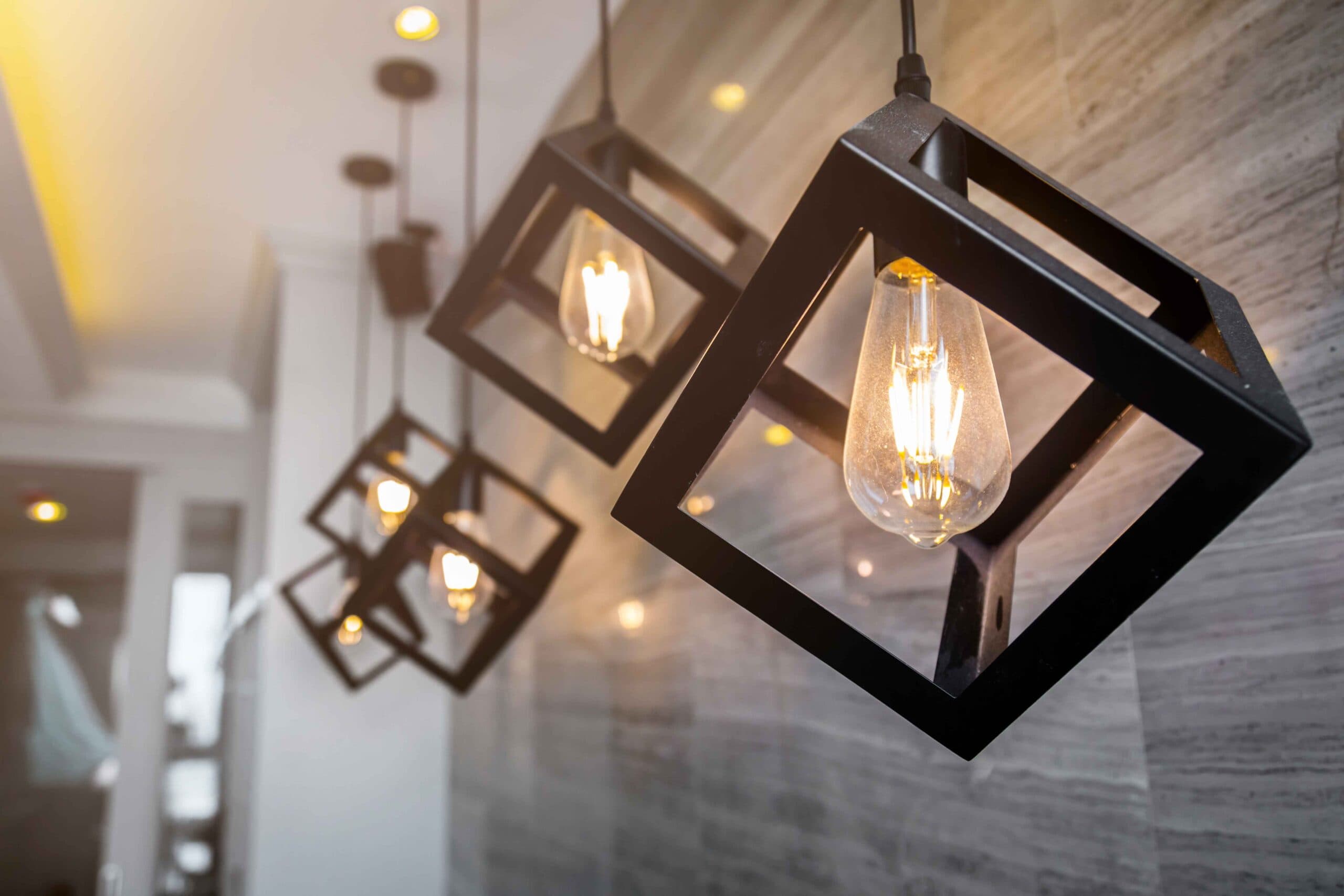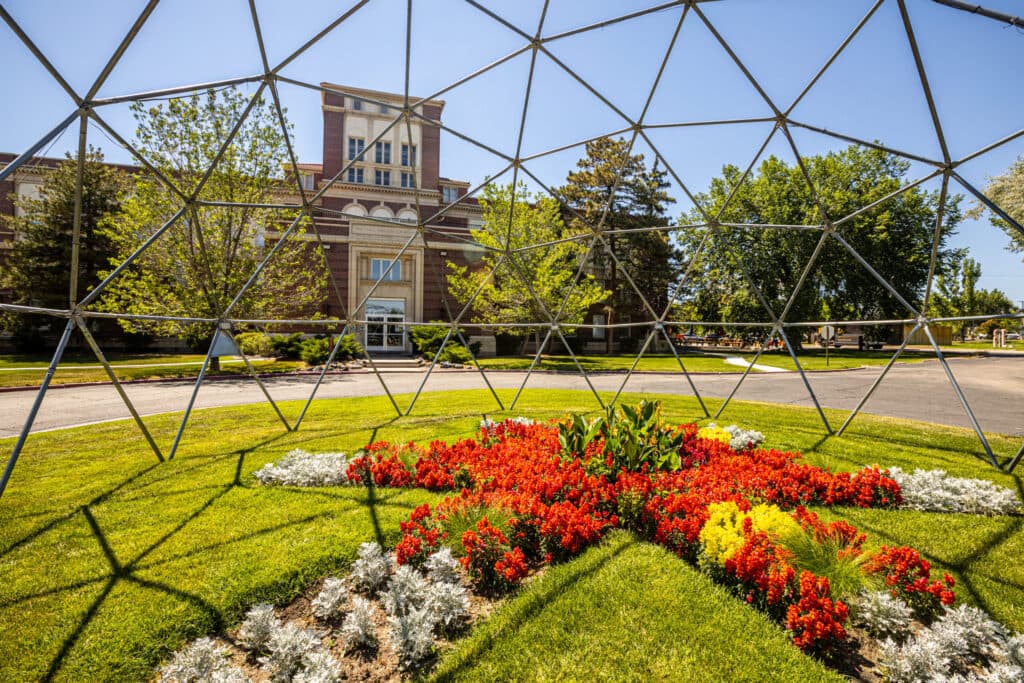When it comes to making any space “pop,” there’s no overstating the impact of interior lighting—and if you have interest in breaking into the field of interior design, lighting design is just one of many concepts you’ll need to master.
By exploring the fundamentals of lighting design and some of today’s up-and-coming lighting trends, you’ll be better prepared to incorporate different types of ambient lighting and lighting technology into your future designs.
Understanding Lighting Design
Before diving into the details of modern lighting trends, lighting control systems and beyond, it’s important for aspiring interior designers to understand the basic concept of lighting design and why it’s so key when creating thoughtful interior spaces.
What Is Lighting Design?
Lighting design refers to the strategies and methods used when incorporating lighting into a residential or commercial space. In most designs, it is ideal to “layer” different types of lighting in order to create plenty of dimension while adding practical function to a space. The three main types of lighting are:
- Task lighting – This is lighting used to help people complete a task, such as working or reading.
- Accent lighting – This lighting is more decorative in nature. It may highlight architectural features of a space or simply add a little visual interest.
- Ambient lighting – This is the most commonly used form of lighting in interior design because it serves the very basic yet critical purpose of illuminating the room so people can see clearly.
Ultimately, much of lighting design comes down to striking the right balance between these different types of lighting to suit the space itself as well as the clients’ particular design tastes and preferences. This may also mean considering other lighting factors, such as color temperature, natural light and more.
Importance of Lighting in Interior Spaces
Applying the principles and best practices of lighting design to interior spaces is crucial to its overall appearance and function. In a home, lighting design can create the sense of warmth and ambiance that a client is seeking while ensuring there is still plenty of practical task lighting to get things done.
In a commercial space, the right lighting design can evoke emotions and influence the overall behavior of clients, customers and employees. In all spaces, lighting design can help highlight special architectural features while creating a welcoming atmosphere. With all this in mind, it is not something that an interior designer can afford to overlook in their work.
Modern Lighting Design Trends
The world of interior design and lighting design is dynamic, with new trends emerging and old trends falling by the wayside on a regular basis. Therefore, i nterior designers are tasked with staying on top of the latest architectural lighting trends in order to best serve their clients. In modern lighting design, this means applying any number of innovative and sustainable lighting solutions into everyday designs for maximum effect.
Innovative Lighting Designs
Plenty of innovative lighting design trends have emerged in the past several years that interior designers have enjoyed working into their own designs. This includes using sculptural pieces as a form of lighting while creating focal points within a space. Meanwhile, the use of oversized features (like large pendant lights) and unique materials within lighting design can really add flair to a space. Interior designers are encouraged to get creative with innovative lighting designs to make their spaces stand out.
Sustainable Lighting Solutions
More than ever, clients are also demanding lighting solutions that are more sustainable and environmentally friendly. With this, we have seen the emergence of trends such as smart home lighting, lighting automation and an increased use of energy-efficient lighting fixtures in both commercial and residential design.
Specifically, light fixtures that are designed to use less energy are highly sought after by today’s clients—whereas others are moving toward energy-saving LED lighting solutions that can create the same ambiance using LED bulbs.
In addition, many clients are looking to install lighting control and automation systems along with IoT lighting (Internet of Things lighting) solutions so that devices are seamlessly interconnected throughout a space or an entire building. All of these smart lighting solutions and technologies can help clients meet their distinct lighting demands while cutting down on energy usage in the process.
Lighting Control Systems
Those looking to break into interior design must become especially familiar with lighting control systems, which are increasingly popular among residential and commercial clients alike. These systems are designed to increase the clients’ ability to control and manipulate lighting within a space to meet their exact needs at any time.
Types of Lighting Control Systems
There are numerous types of lighting control systems, with some of the most common including:
- Occupancy sensors, which automatically detect motion and will turn lights on or off automatically.
- Dimmers, which allow the brightness of a light (or group of lights) to be controlled from a single switch.
- Timers, which allow users to have lights automatically turn on or off during specific times of the day (or days of the week).
- Other lighting controls, which make it possible for users to change lighting temperature or color from a single source.
Benefits of Advanced Lighting Controls
These days, interior design clients want as much control over their spaces as possible. Advanced lighting controls make it easier for just about every imaginable aspect of a building’s lighting to be controlled at any given time. This greater sense of control and customization can help clients better functionally utilize and personalize their spaces.
Advanced lighting controls, such as smart lighting and motion-detection lighting, can yield other benefits. For example, using smart lighting and timers can save energy and cut down on electric bills. At the same time, features like motion-detection lighting can enhance security in and around a building.
Tools and Software for Lighting Design
Interior designers looking to enhance their use of lighting design should also familiarize themselves with some of the most popular lighting design software on the market. These programs can help designers better select and visualize different types of lighting in a given space. Additionally, many of these platforms come with features like energy calculation tools and modeling abilities to create more advanced designs.
Popular Lighting Design Software
So, what are some of the most popular lighting design programs in the realm of interior design? Though this is not a comprehensive list, some of the most widely used software programs include:
- Radiance
- ChalmLite
- SweetLight
- DIALux
- Capture
You can read more about popular lighting design software options here as well as explore some key objectives and features of these platforms.
How to Choose the Right Software
Given the countless lighting design software options, how can you determine which is best for your needs as an interior designer? While much of this boils down to personal preference, there are some other factors you’ll need to keep in mind as you choose.
For many interior designers, cost is an influencing factor. Choosing a platform that has the features you need and is within your budget is a must. Fortunately, there are some low-cost and even free versions of lighting software available that can help you get started.
User-friendliness is another core consideration; choosing a program that is intuitive and easy to navigate will make it a breeze to use while saving you time and hassle. Taking these factors into consideration, you can ultimately select the program that is right for your specific needs. Remember, too, that it is not uncommon for interior designers to use more than one lighting design platform depending on the project.
Practical Applications of Lighting Design
As an interior designer, it’s essential to understand the many practical applications of lighting design in your work. This includes applications in both residential and commercial or industrial lighting.
Residential Lighting Design
In residential lighting design, numerous practical applications begin with providing task lighting to homeowners for things like cooking, working and reading. Meanwhile, accent lighting (such as pendants over a kitchen island) can create targeted light as well as a sense of warmth and welcoming within a space.
Commercial and Industrial Lighting
In commercial and industrial spaces, practical lighting design can be used not just to create ambiance but also to provide critical lighting for workers where it is needed most. In a retail store, for instance, ambient lighting ensures that customers can see what they need, whereas accent lights can draw attention to specific features or products.
In hospitals and other healthcare facilities, proper lighting is crucial for doctors and nurses to provide the best possible care. At the same time, patients and visiting families can enjoy a sense of calm and comfort from ambient and accent lighting in waiting rooms and other spaces. These are just a few examples of the variety of potential applications of lighting design within residential and commercial spaces.
The Future of Lighting Design
Only time will tell what the future holds for the world of lighting design. However, the past few years have already seen some exciting trends emerge—and as technology continues to evolve, it is likely that new lighting innovations are on the horizon. Interior designers should remain up to date with the latest lighting design trends so they can incorporate them into their own designs and keep clients satisfied.
Emerging Technologies
Many of the emerging technologies in the lighting realm currently revolve around cutting back on energy usage without dulling the look or feel of a space. New lighting control systems (including those controlled by artificial intelligence and other new technologies) can help customers optimize their lighting designs while minimizing the amount of energy used. All of this can be beneficial to the environment while having the potential to save customers money on their energy bills.
Trends to Watch
In the coming years, it is expected that lighting design will lend more to nature than ever before, with lighting fixtures reflecting the various organic shapes found in nature and bringing that beauty indoors. Referred to as biophilic lighting in the interior design world, this trend is even believed by some to have health and wellness benefits.
Interested in Learning More About Interior Design?
The strategic use of lighting in interior design can make or break a space, which is why interior designers are trusted to brainstorm and implement creative lighting solutions to meet their clients’ needs. While it may be just one component of the overarching concept of interior design, there’s a lot to learn about residential and commercial lighting design.
If you are interested in exploring interior design as a potential career path, Rocky Mountain College of Art + Design is proud to offer both online and on-campus Bachelor of Fine Arts in Interior Design degrees. In these programs, students can discover what it takes to create inspiring spaces from the ground up. Reach out to learn more, or get started with your application today.

